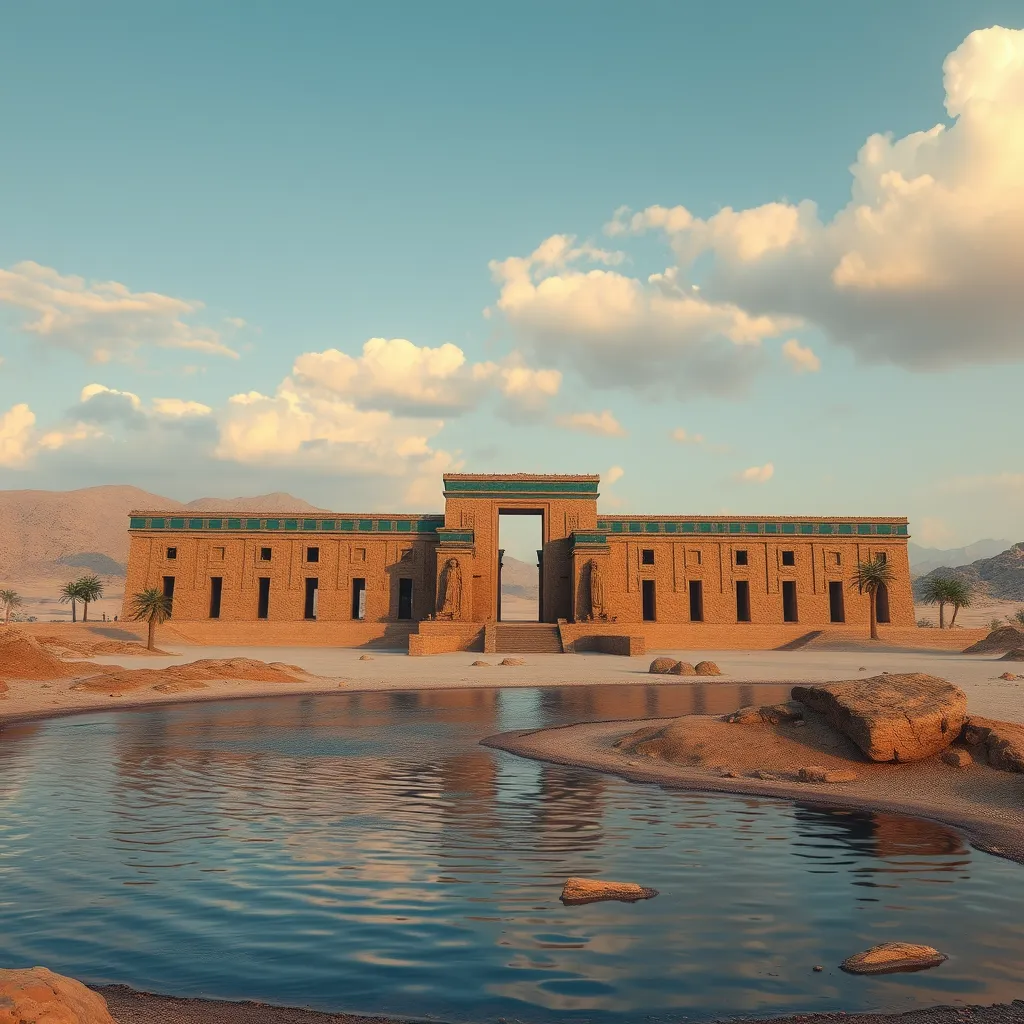The Duat: A Symbol of Hope and Renewal
I. Introduction
The Duat, often referred to as the Egyptian underworld, represents a complex realm that embodies the themes of life, death, and rebirth. In ancient Egyptian mythology, it is not merely a place of darkness and despair but a crucial aspect of the journey toward renewal and hope.
The significance of the Duat in ancient Egyptian culture cannot be overstated. It was a place where the deceased would journey after death, facing various trials before achieving a form of resurrection. This underlying theme of hope and renewal resonates throughout the stories and practices surrounding the Duat.
II. Historical Context of the Duat
The concept of the Duat has its origins in early Egyptian beliefs and has evolved over millennia. Initially, it was a vague and shadowy realm, but as the Egyptian civilization progressed, the Duat became more defined in its characteristics and significance.
Key texts, such as the “Book of the Dead,” detail the various aspects of the Duat, illustrating its landscapes and the journey of the soul. Numerous artifacts, including tomb paintings and inscriptions, depict the Duat, emphasizing its importance in ancient Egyptian religion and culture.
III. The Structure of the Duat
The Duat is portrayed as a vast landscape composed of different realms, each representing various stages of the afterlife. These realms include:
- The Field of Reeds – a paradise for the righteous
- The Hall of Two Truths – where souls are judged
- The Lake of Fire – a place for the unworthy
Each of these locations symbolizes aspects of life, death, and rebirth. The journey through the Duat serves as a powerful metaphor for transformation, illustrating that death is not an end but a transition to a new form of existence.
IV. Deities Associated with the Duat
Several key figures play pivotal roles in the Duat, most notably:
- Osiris: The god of the afterlife and resurrection, Osiris is central to the concept of renewal.
- Anubis: The god of mummification and the protector of graves, Anubis guides souls through the Duat.
These deities symbolize hope and renewal in the context of the Duat. Osiris, in particular, represents the promise of resurrection, while Anubis embodies the guidance and protection offered to souls on their journey.
V. The Journey of the Soul in the Duat
Upon death, the soul embarks on a journey through the Duat, navigating various challenges and trials. This process is crucial for the soul’s transformation and eventual resurrection. Key elements of this journey include:
- The weighing of the heart against the feather of Ma’at, symbolizing truth and justice.
- Confrontation with various deities and monsters that test the soul’s purity.
The trials faced by the soul are significant, as they represent the struggles of life and the importance of virtue. The ultimate goal is to achieve resurrection and eternal life, a theme that underscores the Duat as a beacon of hope.
VI. The Duat in Art and Literature
Art and literature from ancient Egypt provide rich insights into the Duat. Tomb paintings and hieroglyphics often depict the journey through the Duat, illustrating the landscapes and trials faced by the deceased. These representations serve not only as a guide for the dead but also as a reflection of the beliefs and values of ancient Egyptian society.
In addition to tomb art, references to the Duat can be found in ancient texts, such as the “Book of the Dead” and the “Coffin Texts.” Modern interpretations of these works have also shed light on the enduring significance of the Duat, influencing contemporary views on death and the afterlife.
VII. Modern Interpretations of the Duat
Today, the Duat can be seen as a symbol of personal transformation. Many contemporary spiritual and philosophical beliefs draw parallels between the journey through the Duat and the process of overcoming life’s challenges. The themes of death and renewal resonate in various practices, such as:
- Rituals of letting go and rebirth.
- Psychological frameworks that explore the concept of transformation through adversity.
The relevance of the Duat in modern discussions on death and renewal highlights its enduring legacy in our collective consciousness. It encourages reflection on the cycles of life and the potential for renewal in our own experiences.
VIII. Conclusion
In conclusion, the Duat serves as a powerful symbol of hope and renewal within ancient Egyptian mythology. Its significance is multifaceted, encompassing themes of transformation, guidance, and the promise of resurrection. The enduring legacy of the Duat in culture and spirituality invites us to reflect on its lessons in our own lives, encouraging us to embrace the cycles of life and the potential for new beginnings.
As we contemplate the journey through the Duat, we are reminded that every ending carries the seeds of renewal, urging us to live with hope and purpose.




